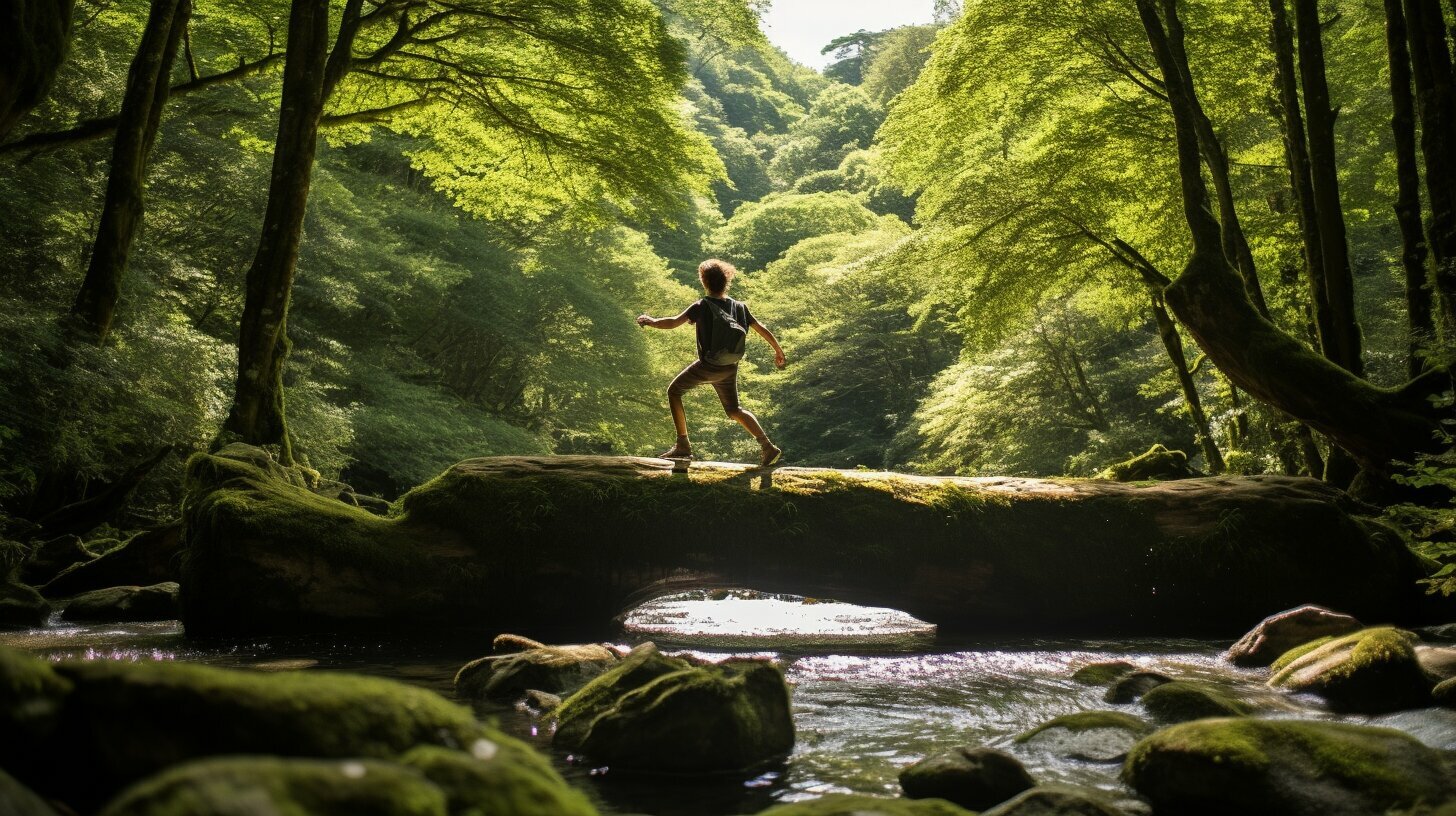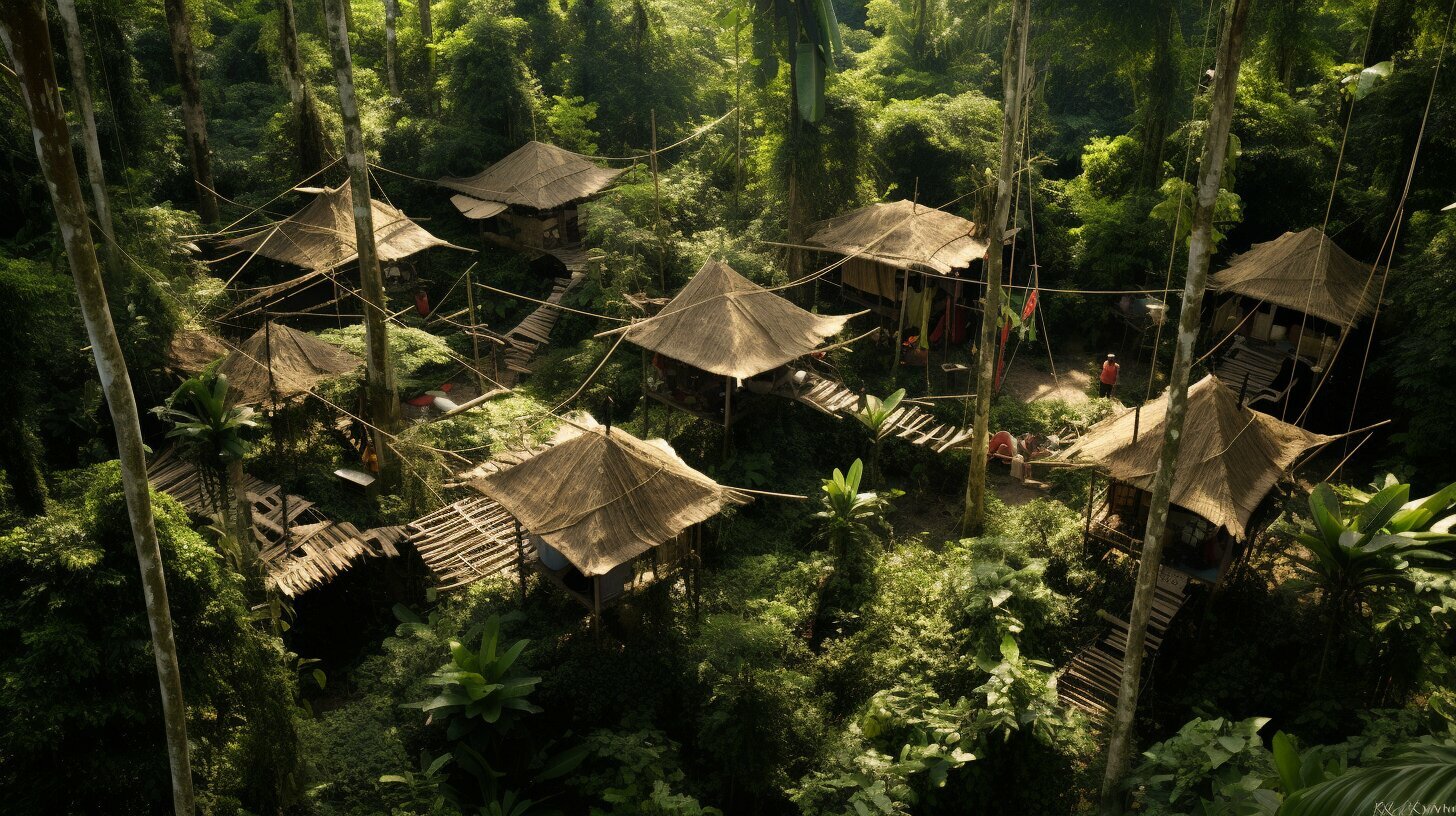If you’re an outdoor enthusiast, then you know how important it is to be prepared for anything. Whether you’re hiking, camping, or exploring the wilderness, knowing how to evade danger can make all the difference. In this comprehensive guide, you will learn essential wilderness survival skills and outdoor evasion techniques to help you master the art of wilderness evasion.
From understanding basic wilderness evasion tactics to concealing your presence in the wild, we’ve got you covered. You’ll also learn about navigation and route planning, developing stealth and awareness skills, foraging and finding natural resources, crafting tools and shelter, firecraft and signaling techniques, and mental and emotional preparedness.
Key Takeaways
- Wilderness evasion requires essential survival skills and situational awareness.
- Concealing your presence, navigating effectively, and developing stealth and awareness skills are vital for successful evasion.
- Foraging, crafting tools and shelter, and firecraft and signaling techniques are essential for sustaining yourself in the wild.
- Mental and emotional preparedness is crucial for overcoming fear and managing stress during evasion scenarios.
- Preparation and practice are key to mastering wilderness evasion and ensuring your safety.
Understanding Wilderness Evasion Tactics
When it comes to wilderness evasion, the key is to avoid capture in the first place. It is essential to understand basic wilderness evasion tactics to stay safe while traveling or escaping through natural surroundings. The wilderness poses a different set of challenges than urban environments, so it’s crucial to have a good understanding of the nuances of evading capture in nature.
Escape and evasion techniques in the wilderness require a unique set of skills and knowledge compared to traditional survival skills. It’s essential to understand how to blend in with your surroundings and utilize the natural environment to your advantage. Here are some of the fundamental principles of evading capture in nature:
Disclosure: When you buy through links on our site, we may earn an affiliate commission.
- Stay calm and think clearly: In a high-pressure situation, it can be tough to maintain a clear headspace. Being able to stay calm and think rationally is crucial in wilderness evasion tactics. Panic can make you careless and vulnerable, which will make it easier for pursuers to track you down.
- Be aware of your surroundings: Understanding your surroundings is an essential component of successful wilderness evasion tactics. Understand the terrain, weather patterns, and wildlife to be able to plan your escape route. It’s important to assess the risks and challenges of the terrain you will be navigating through and adjust your tactics accordingly.
- Conceal your movements: If you must move through an area, it is essential to do so stealthily. Move quietly and slowly to avoid drawing attention to your location. Be mindful of any noise you may be making and try to minimize it as much as possible.
- Utilize natural cover and camouflage: It’s essential to blend in with your surroundings to avoid detection. Wear clothing that blends in with the natural environment and utilize natural cover to your advantage. Using camouflage techniques can help you hide in plain sight and avoid detection.
- Plan your route carefully: Knowing where you are going and how you will get there is essential in successful outdoor evasion techniques. Plan your route carefully, taking into account the terrain, water sources, and other factors that may impact your journey. It’s important to avoid major roads and other likely places where pursuers may search for you.
By keeping these basic wilderness evasion tactics in mind, you will be better prepared to evade capture in nature. In the next sections, we will explore more specific techniques and strategies to help you master wilderness evasion.
Expert Tip:
“When you are in the wild, it’s important to be mindful of all your actions and movements. Always study your environment, adapt to your surroundings, and be strategic in your navigation and route planning. Remember, staying hidden and avoiding detection is the key to successful wilderness evasion.” – Wilderness Survival Expert
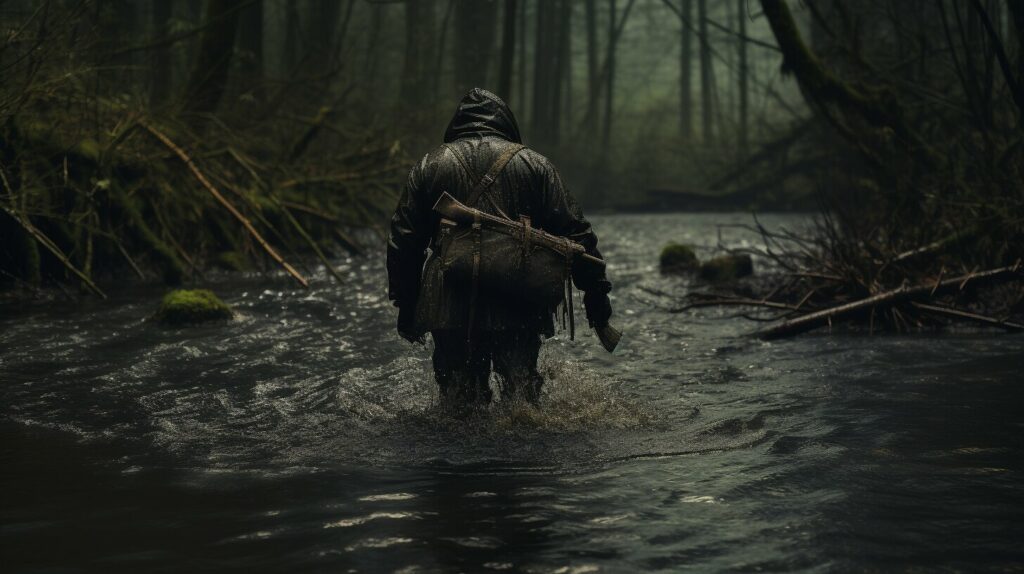
Concealing Your Presence in the Wild
When evading capture in the wild, it’s essential to remain undetected. Concealing your presence is the key to successful evasion. To do this, you must learn how to blend in with your surroundings and avoid detection by your pursuers. Here are some effective techniques for evading capture in the wild.
Camouflage Clothing
Camouflage clothing can help you blend in with your surroundings, making it harder for your pursuers to spot you. Choose clothing that matches the colors and patterns of the immediate area. If you don’t have camouflage clothing, try to wear clothing in muted, natural colors like brown, green, and gray. Avoid wearing bright colors or patterns that will make you stand out.
The Art of Stalking
Stalking is the art of moving silently through the woods to avoid detection. Walk slowly and carefully, placing each foot gently on the ground to avoid snapping twigs or crunching leaves. Use your peripheral vision to scan the area around you for any signs of movement. If you see an animal, mimic its movements to avoid detection.
Camouflage Techniques
You can use natural materials to create effective camouflage. Rub mud or dirt on your clothes and skin to blend in with the earth. Use leaves and branches to cover yourself and break up your silhouette. If you’re hiding behind a tree, press your body against the trunk and blend in with the bark.
Remember, evading capture in the wild requires patience, skill, and perseverance. By using these techniques, you can conceal your presence effectively and increase your chances of evading capture successfully.
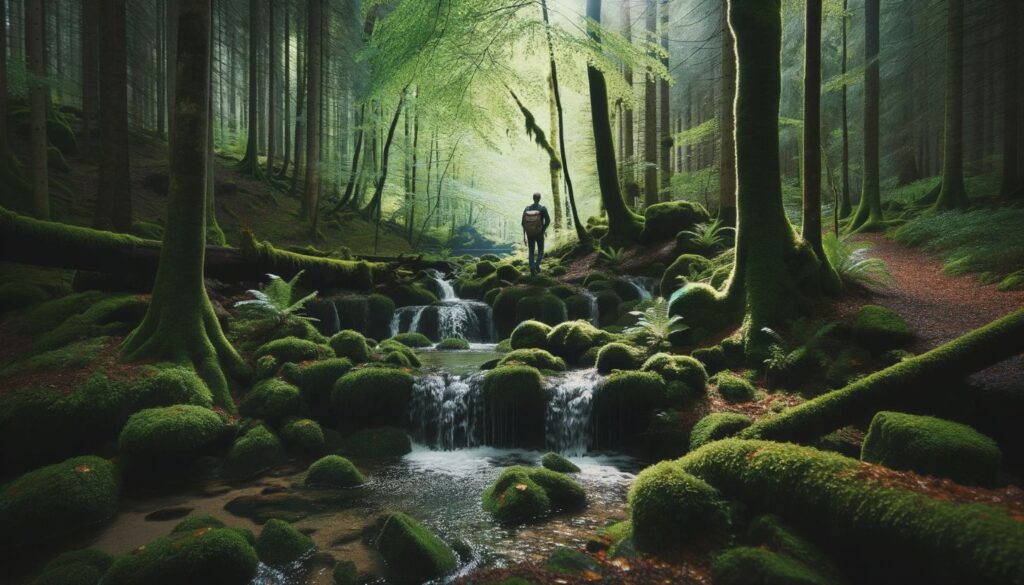
Navigation and Route Planning
When it comes to wilderness escape and evasion, navigation is one of the most crucial skills to have. Knowing the right direction to travel in and understanding the terrain can mean the difference between getting caught and successfully evading capture.
Your first step in navigation is to identify landmarks in your surroundings. Use them to guide you, especially if you lack a compass, map, or GPS device. Keep in mind that the sun rises in the east and sets in the west. During the day, you can use the sun’s position to gain a sense of direction. If it’s cloudy, moss on trees tends to grow on the north side, which can help you orient yourself.
If you have a compass, use it to get a more accurate sense of direction. With a map, you can plan your route and mark your progress. It’s crucial to avoid moving in circles or going back to a previously visited location. Try to follow a straight line as much as possible, using the terrain to guide you. Stay on ridges, depressions, and prominent landforms to ensure that you are traveling in the right direction.
In addition to having the right tools, there are a few things you can do to improve your chances of successful navigation. Keep track of your progress by marking your route with rocks or sticks. This can help you avoid getting lost or going in circles. If you’re moving through an area with thick vegetation, use a walking stick or machete to clear a path for yourself.
Remember, it’s better to move slowly and safely than to rush and injure yourself. Take breaks often to observe your surroundings, catch your breath, and plan the next leg of your journey. With practice and preparation, you can master wilderness escape and evasion, ensuring your survival in even the most challenging terrains.
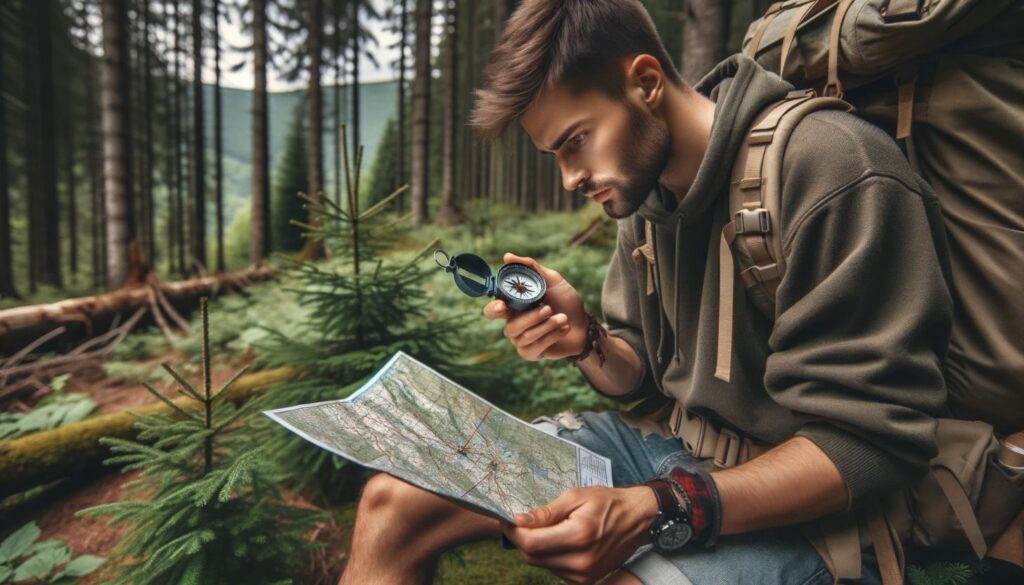
Developing Stealth and Awareness Skills
When it comes to outdoor evasion techniques and escaping capture in the wilderness, developing your stealth and awareness skills is essential. Whether you’re attempting to evade a predator in the wild or avoid detection by pursuers, these skills could make all the difference in your survival.
Moving Silently
One of the most critical components of developing your stealth skills is learning how to move silently. This technique may take some practice, but it can significantly reduce the chances of alerting predators or pursuers to your presence. Here are a few tips to help you move quietly:
- Take small, deliberate steps to distribute your weight evenly
- Avoid stepping on twigs, dry leaves, or other noisy materials
- Wear soft-soled shoes or go barefoot if possible
- Use the natural terrain to your advantage, such as walking on rocks or in dry stream beds
Analyzing Your Surroundings
Developing your situational awareness is another key component of mastering outdoor evasion techniques. This skill involves analyzing your surroundings and identifying potential threats or obstacles that could impede your escape. Here are a few tips to help you enhance your awareness skills:
- Take frequent breaks to scan your surroundings and assess any changes or potential threats
- Look for signs of animals or humans in the area, such as tracks or discarded items
- Listen for any sounds that could indicate danger, such as footsteps, rustling leaves, or animal calls
Staying Alert to Threats
Another critical aspect of developing your awareness skills is staying alert to potential threats. Whether you’re in a survival evasion and recovery scenario or simply enjoying the great outdoors, maintaining a high level of alertness can help you avoid danger and stay safe. Here are a few tips to help you stay alert:
- Avoid distractions such as loud music or electronics that could detract from your ability to hear or see potential dangers
- Learn to recognize common predator behaviors and signs of aggression, such as growling, snarling, or stalking
- Trust your instincts and avoid situations or areas that feel unsafe or unfamiliar
By developing these essential outdoor evasion techniques and mastering your stealth and awareness skills, you can increase your chances of successfully escaping capture and surviving in the wilderness.
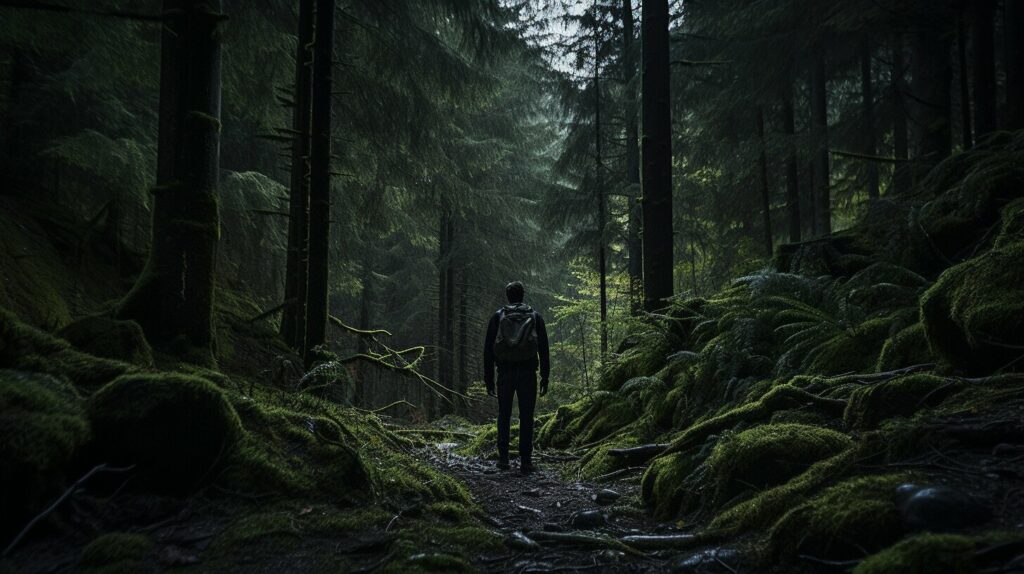
Foraging and Finding Natural Resources
When evading capture in nature, knowing how to forage and find natural resources is essential for survival. In this section, we will explore the basic wilderness survival skills required to find food, water, and other vital resources while evading in the wild.
The first step in foraging is to identify edible plants and wild fruits, nuts, and berries. Before consuming any wild plants, you must ensure that they are safe to eat. Be cautious of poisonous plants such as poison ivy or poison oak. If you are unsure about the edibility of a plant, consult a wilderness survival guide or expert.
You can also find freshwater sources in the wild, such as springs, streams, and rivers. Always filter or boil water from these sources to remove any harmful bacteria or parasites that may be present. Carry a portable water filter or purification tablets to ensure that you have access to clean drinking water.
In addition to finding food and water, you may need to build a shelter to protect yourself from the elements. Use natural materials such as branches, leaves, and grass to construct a makeshift shelter. Make sure that your shelter is well-insulated and protected from the wind and rain.
When foraging and finding resources, it’s important to minimize your impact on the environment. Use only dead branches and leaves for shelter and avoid disturbing the natural surroundings. Leave no trace of your presence, and take care not to damage any vegetation or wildlife in the area.

Top Tips for Foraging and Finding Natural Resources
- Always identify edible plants before consuming
- Carry a portable water filter or purification tablets
- Use natural materials to construct a shelter
- Minimize your impact on the environment
“Knowing how to find natural resources is key to wilderness survival. By foraging for food and finding freshwater sources, you can sustain yourself while evading capture in nature.”
Crafting Tools and Shelter
When evading capture in the wilderness, it’s crucial to know how to craft tools and build shelter to increase your chances of survival. These wilderness survival skills can make all the difference in survival evasion and recovery scenarios.
First, let’s discuss crafting tools. Knowing how to make simple tools can help you hunt, gather, and build. Here are some essential tools to craft in the wild:
| Tool | How to Make |
|---|---|
| Spear | Find a straight branch, sharpen one end with a knife or rock, and use cordage to attach a handle. |
| Bow and Arrow | Find a flexible branch for the bow, create notches on either end, and use a cord or string to attach. For arrows, find straight sticks, sharpen one end, and attach feathers for stabilization. |
| Fish Hooks | Find a sturdy twig or bone, sharpen one end, and shape the other end into a hook shape. |
Once you have the necessary tools, it’s time to build shelter. Proper shelter can protect you from the elements and provide a safe space to rest. Here are some useful shelter-building techniques:
- Leaf Hut: Collect leaves and branches and make a dome-shaped hut. Add layers of insulation for more protection.
- Lean-To: Find a large branch or rock and prop other branches against it at an angle to create a lean-to. Use leaves, branches, or other material to cover the shelter.
- Debris Shelter: Find a sturdy framework for the shelter using branches and cover it with leaves, pine needles, and other debris.
Remember, the key to crafting tools and building shelter is to use what nature provides. The more comfortable you are in the wild, the better your chances of survival evasion and recovery.
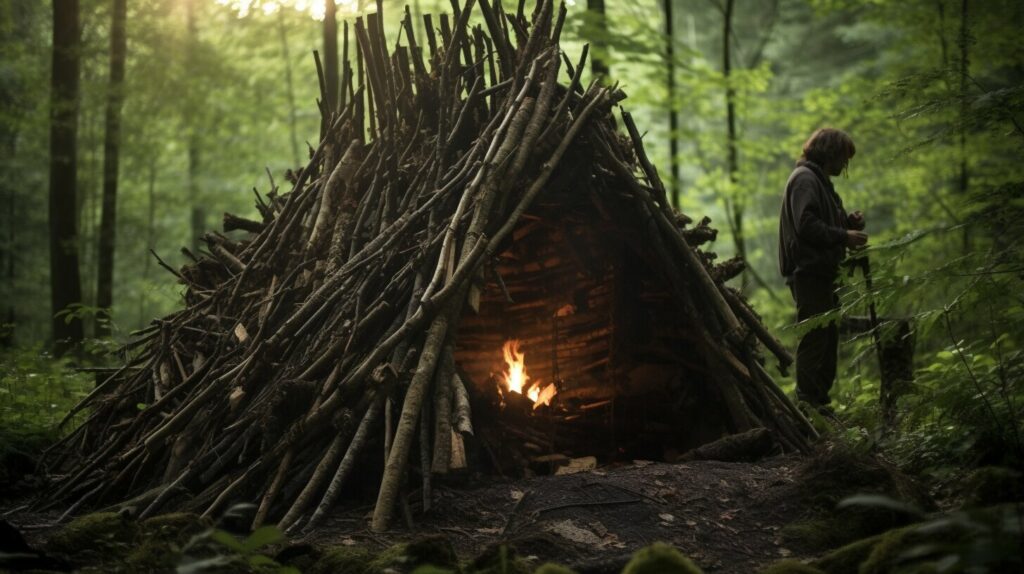
Firecraft and Signaling Techniques
Fire can be a life-saving tool in wilderness evasion scenarios. Not only does fire provide warmth and light, but it can also be used as a signaling device. Here are some tips for starting a fire in challenging conditions:
- Gather dry tinder. Look for small, dry twigs, leaves, and grasses. Make sure they snap when you bend them, indicating that they’re dry.
- Find larger sticks and kindling. Look for sticks that are no thicker than your wrist. Break them into smaller pieces to use as kindling.
- Build a fire platform. Use rocks or a moisture-resistant surface to keep your fire off the ground.
- Arrange your tinder in a teepee shape. Place your kindling around the tinder in a teepee shape, leaving a small gap on one side for lighting the tinder.
- Use a firestarter. Matches, lighters, and ferrocerium rods are all great firestarters. Aim for the center of the teepee and ignite the tinder.
- Add more kindling. As the fire grows, gradually add larger sticks to keep it going.
- Use it as a signaling device. Once your fire is going, use it as a signaling device by creating smoke. Smother the fire with green, wet vegetation to create a thick, white smoke that’s highly visible.
Smoke is not the only way to signal for help. Visual signals, such as mirrors, flashlights, and brightly colored clothing, can also be effective. Here are some additional signaling techniques to consider:
- Three of anything. Create three of anything in a clear pattern to signal distress, such as three fires in a line or three flashes of a light.
- Morse code. Learn Morse code and use a flashlight or reflective surface to send a message in code.
- Whistle or shout. Make noise by whistling, shouting, or banging objects together in a rhythmic pattern.
Remember, signaling for help should be a last resort. Always prioritize your survival needs and only signal for help when all other options have been exhausted.
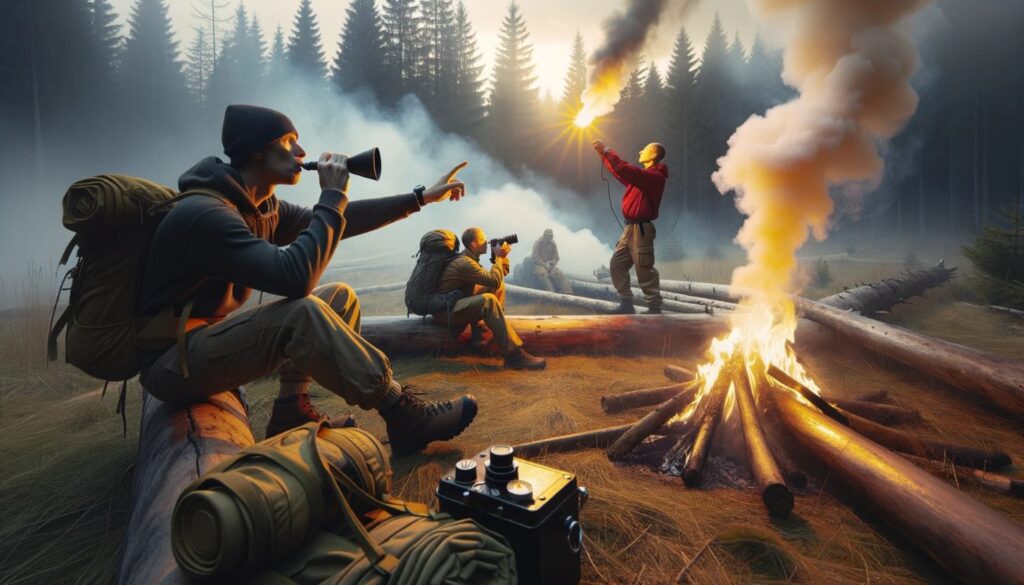
Mental and Emotional Preparedness
Wilderness evasion requires more than just physical survival skills. Your mental and emotional preparation can ultimately mean the difference between success and failure in evading capture in nature or escape and evasion techniques in the wilderness.
First, it’s essential to maintain a clear and focused mindset. Avoid becoming overwhelmed by fear or panic, and stay alert to your surroundings. Practice visualization techniques to prepare for different scenarios, and mentally rehearse your responses in case of emergency. By doing so, your mind will be better equipped to handle unexpected situations when evading capture in nature.
Managing stress is also vital for mental preparedness. Stressful situations can impair your judgment and decision-making abilities, so stay calm and focused. Take deep breaths, meditate, or practice other relaxation techniques to reduce stress levels and help you stay centered.
Emotional Resilience
Wilderness evasion can also be emotionally challenging, and it’s essential to nurture your emotional resilience. Remember, emotions are natural, and it’s okay to feel scared, anxious, or frustrated. Acknowledge your emotions, but don’t let them control you.
Take care of your physical needs to maintain emotional resilience. Get enough sleep, eat properly, and stay hydrated. These basic needs can help you stay strong and focused during challenging situations.
Finally, don’t be afraid to ask for help. Whether it’s from your companions or search and rescue teams, seeking assistance is a sign of strength and can increase your chances of evading capture in nature successfully.
Overall, mental and emotional preparedness is crucial for wilderness evasion. Practice visualization, stress management, and emotional resilience techniques to ensure you’re ready for any situation when it comes to escape and evasion techniques in the wilderness.
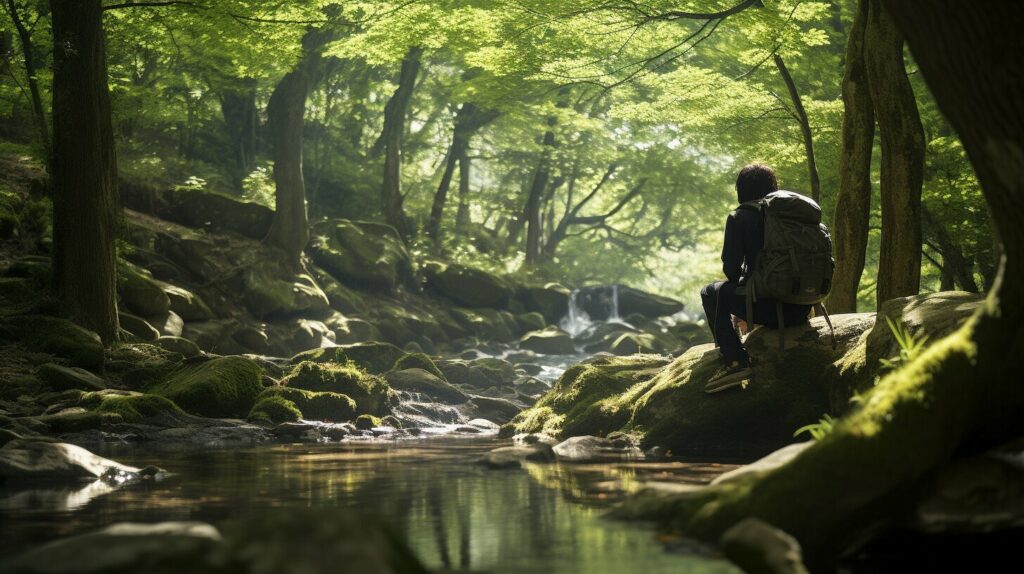
Conclusion
Venturing into the wilderness holds endless adventures, but it also poses unseen dangers. With the knowledge provided here, you now have the tools to vanish into the folds of untamed landscapes, leaving no trace of your passage.
Master the subtle arts of stealth, awareness, and adaptation to remain undetected. Let ingenuity guide you in utilizing nature’s provisions without disturbing its sanctity. Most importantly, keep your mind as sharp as your skills. Maintain focus, manage stress, and overcome fear in the face of uncertainty.
You now hold the keys to evading pursuers and avoiding capture in even the most unforgiving terrain. Tread lightly, trust your instincts, and disappear like a phantom into the wild. You are prepared for whatever adventures or challenges lie ahead.
FAQ
How long does it take to master wilderness evasion?
The time it takes to master wilderness evasion varies depending on individual dedication and practice. It is a skill that requires continuous learning and improvement.
Can wilderness evasion tactics be used in urban environments?
While some principles of wilderness evasion can be applied in urban settings, it is essential to adapt and learn specific techniques for urban environments as they present different challenges.
Is wilderness evasion legal?
Wilderness evasion refers to techniques used in survival and escape scenarios. While it is important to understand the legal limitations, acquiring these skills for personal knowledge and preparedness is legal in most jurisdictions.
Can I learn wilderness evasion without any prior outdoor experience?
While prior outdoor experience can be beneficial, it is not a prerequisite for learning wilderness evasion. With proper guidance and practice, anyone can acquire the necessary skills.
Are there any age restrictions for learning wilderness evasion?
There are no specific age restrictions for learning wilderness evasion; however, it is important to consider physical capabilities, maturity, and supervision for younger individuals.
Should I carry any specific equipment for wilderness evasion?
Carrying essential survival tools and equipment is recommended for wilderness evasion. These may include navigation tools, fire-starting materials, first aid supplies, and signaling devices.
Can wilderness evasion techniques be used for self-defense?
While wilderness evasion techniques focus on escaping and evading capture, some principles can be applied for self-defense purposes. It is important to prioritize personal safety and legality in any situation.
Are there any organizations or courses that offer wilderness evasion training?
Yes, there are organizations and specialized courses that offer wilderness evasion training. These can provide structured learning environments and opportunities for practical application.
Is wilderness evasion only for extreme survival situations?
Wilderness evasion skills can be useful in extreme survival situations, but they can also be used for recreational activities, enhancing outdoor skills, and building confidence in challenging environments.
Are there any legal implications to using wilderness evasion techniques?
It is important to understand the legal implications and limitations of using wilderness evasion techniques. Abiding by local laws and regulations is essential to ensure personal safety and avoid legal issues.

